Fitness and fun go hand in hand when you play volleyball. If you want to work as a team and win, it is essential to understand the rules, the court layout (the different zones), and the responsibilities of the various positions and players.
Considering it is a team sport which is meant to be played competitively, coaches and team captains need to teach teams how to navigate the court and understand the various rules and strategies that apply.
What is an attack line in volleyball?
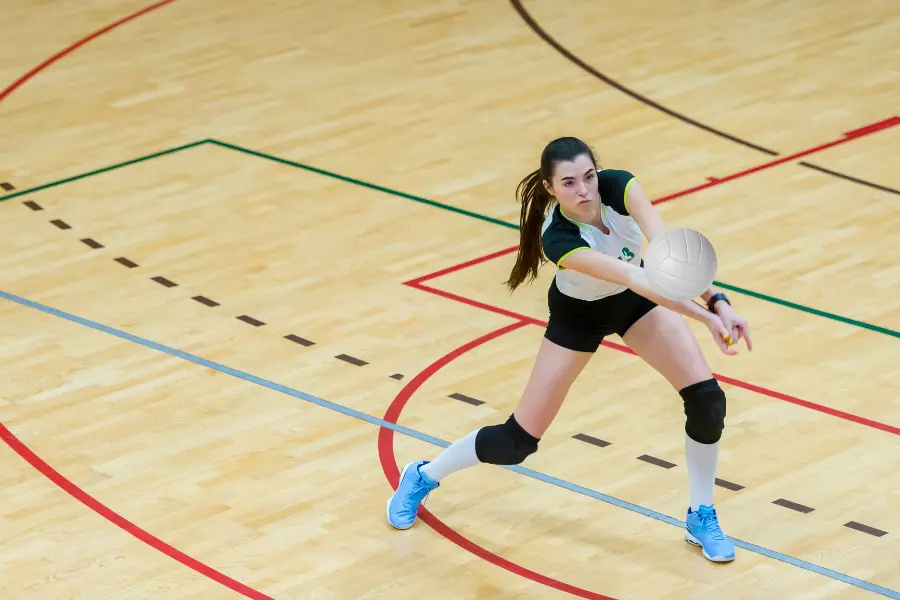
The “10ft line”, or attack line, separates the net by a distance of ten feet (or three meters). If a player takes off behind the attack line, he or she can attack the ball above the net.
A volleyball team can play its best game by understanding the significance and function of the attack line. Learn what an attack line is, what the front zone is, and whether liberos can play inside the attack line.
What the attack line is meant to accomplish?
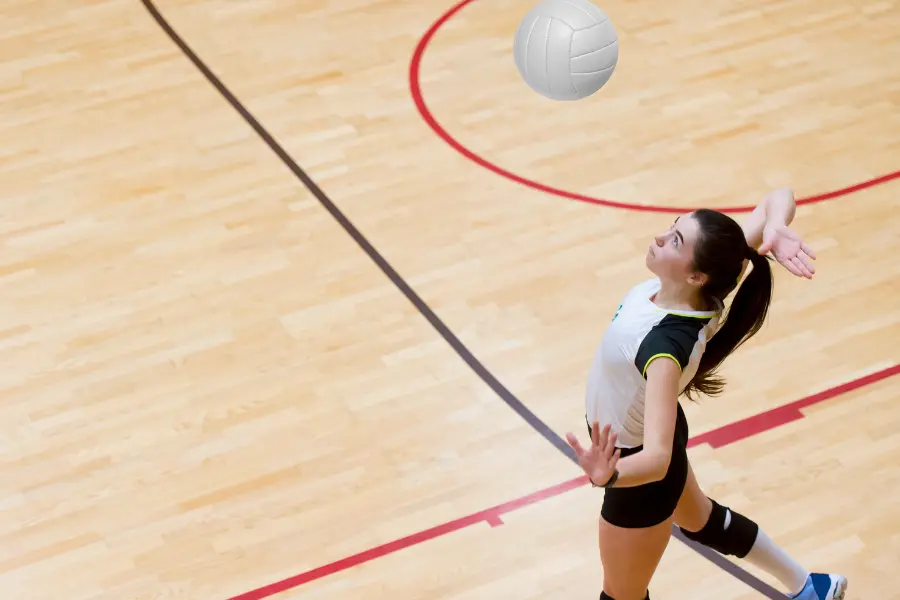
Front row players and back row players seem to be separated by the attack line. The first, fifth, and sixth positions are located behind the attack line, on the back row. There are four players in the front row near, on, or in front of the attack line.
Although they may appear to be separated when they are in their base rotation positions, the attack line actually does not separate front and back row players.
At higher levels, you’ll notice that the attack line is really unrestricted with players lining up in various formations. As soon as the ball has been served, players may move anywhere on the court, but if they are in a rotational position (positions 1, 5, and 6), they must still follow the attack limits.
Back row players can hit the ball over the net only if they are behind the 10ft line or jump from behind it. Front row players can freely block and attack the ball at the net.
The importance of the attack line

A player’s movement is regulated by the attack line during certain phases of the game. Both attacking and defending teams can benefit from its strategy:
Attacking Strategy
A player who is positioned behind the attack line has the advantage of getting a running start before contacting the ball. In addition to building momentum, this running start increases the likelihood of attackers scoring by penetrating the defense of the opposing team.
Defensive Strategy
As part of the defensive strategy, the attack line is also crucial. Blockers and back-row defenders are positioned according to the attack line by defending teams.
The defending team can effectively contest the incoming spike while avoiding foot faults and rule violations by positioning blockers close to the net while not crossing the attack line.
You may enjoy reading Open Spiker in Volleyball Position
The volleyball court has different zones and lines
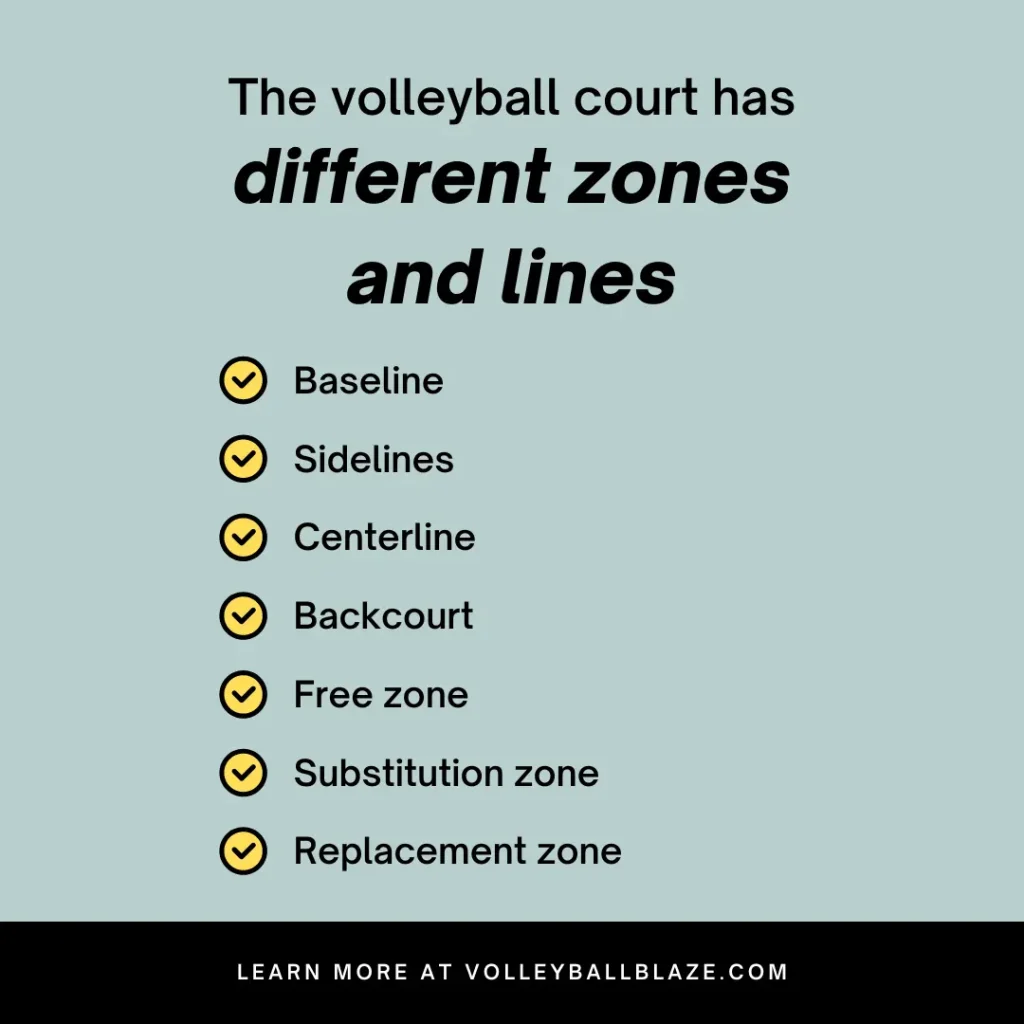
If you’re new to volleyball or haven’t played for some time, you might have trouble telling the lines apart or even remembering them. Every line on the volleyball court serves a specific purpose and impacts how the game is refereed and how you and your teammates play.
Having a clear understanding of each court line is important for every member of a team.
In addition to the attack line, the volleyball court has the following zones, lines, and markings:
Baseline
The volleyball court ends at this line.
Sidelines
The boundary lines on the sides of the court are often referred to as “boundary lines.”. They measure 60 feet long and connect to the baselines.
Centerline
The centreline is beneath the net. Each team has a side of the court divided by this line.
Backcourt
It is the area behind the attack line, before the baseline or end line.
Free zone
The players are still permitted to make occasional plays outside the boundary lines.
Substitution zone
A substitute enters the game at this point. Between the attack line and the centreline, the zone runs along the sideline.
Replacement zone
A Libero player enters here to replace a back row player.
Every player should be able to identify each line and understand its purpose. During training and practices, coaches should give instructions in a manner that prevents confusion among players.
You may enjoy reading What Is An Ace in Volleyball?
Rules and Regulations for Attack Lines
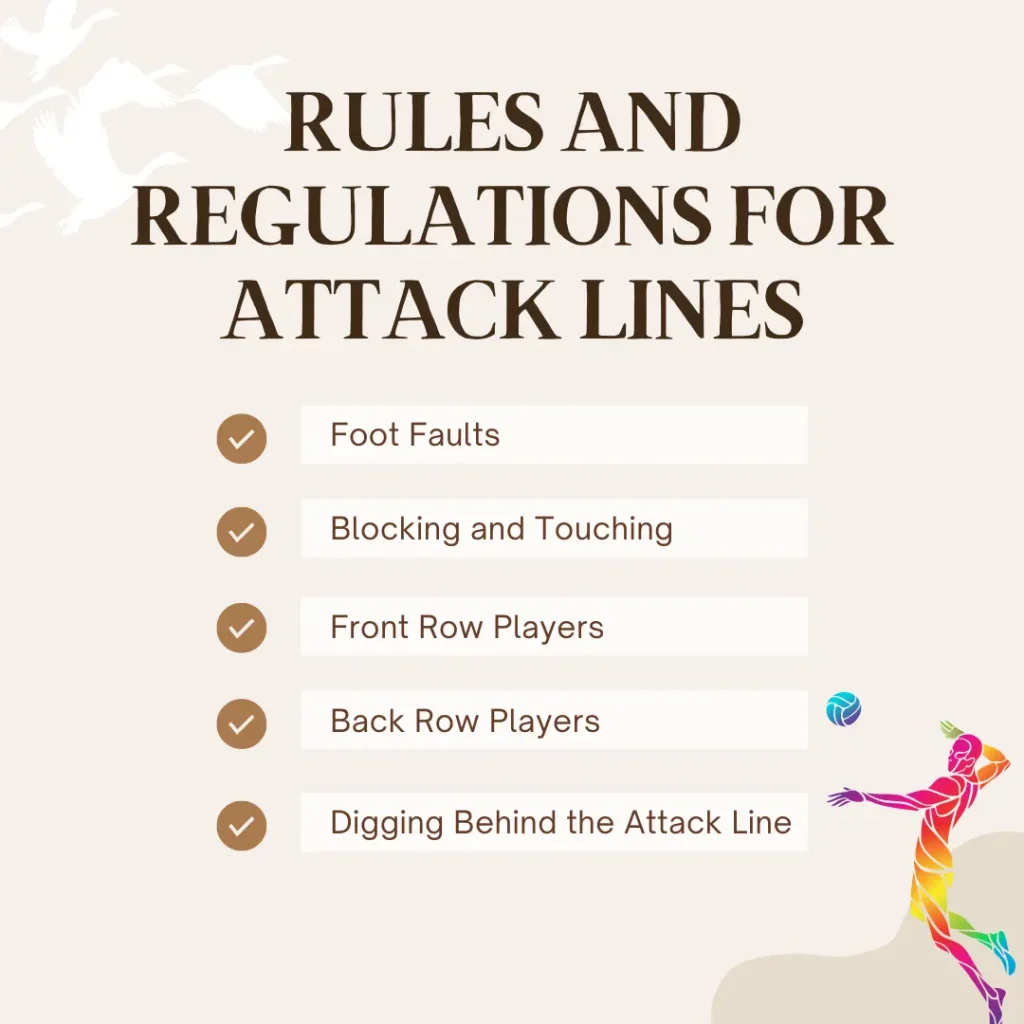
For fair play and maintaining the integrity of the game, players and teams must follow the attack line rules. Among these rules are:
Foot Faults
Players commit foot faults when their feet cross or touch the attack line while attempting to hit the ball. In this case, the opposing team wins the point due to a violation. On the opponent’s side of the attack line, players must ensure that no part of their foot makes contact with the ground.
Blocking and Touching
Blocks are allowed by front-row players, even if they reach over the attack line. To prevent interference with the ball before an opponent has made contact with it, they must ensure that no part of their body crosses the net’s plane.
Front Row Players
From positions in front of the attack line, only front-row players are allowed to attack the ball. Front row players are primarily responsible for offensive action in the standard volleyball rotation because they are closest to the net.
Back Row Players
When the ball is completely above the net height, back-row players are not allowed to attack the ball. If they make contact with the ball before it rises above the net, they can execute a back-row attack.
Digging Behind the Attack Line
If the ball crosses the net from an attacking hit, back-row players can dig or pass it, so long as they do not violate any other rules.
Attack line distance and dimensions
On both sides of the court, the attack line is ten feet away from the net. International volleyball competitions use this standardized distance to ensure consistency. In order to maintain the integrity of the game, the dimensions are carefully measured.
Attack Line Violations
If the attack line rules are violated, points can be deducted or possession can be lost. The take-off point must be kept in mind by players in order to avoid these penalties.
In addition to monitoring players’ positions during attacks, umpires stress the importance of adhering to attack line rules.
You may enjoy reading How To Toss The Ball Correctly In Volleyball?
Offensive Strategies Using the Attack Line
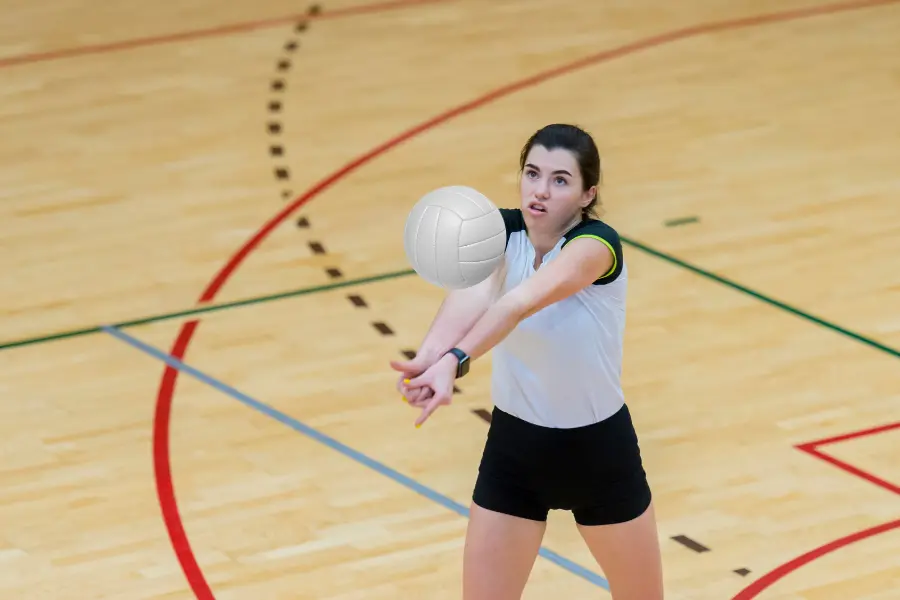
A team’s attack line is often developed with specific strategies in mind. It is possible for front-row players to execute unexpected attacks in the area behind the attack line, catching their opponents off guard as a result. In order to take advantage of the offensive freedom granted by the attack line, coaches and players collaborate to design plays.
Defensive Approaches Against the Attack Line
Defense strategies become crucial when attacks originate behind the attack line. To counter the variety of attacks that can be launched from this area, teams may adjust block formations and defensive positions.
Training Tips for Attack Line Proficiency
Targeted training is essential for players who want to improve their attack line skills. Precision take-offs and effective attacks require precise footwork, timing, and spatial awareness. In drills that simulate real-game scenarios involving the attack line, coaches are crucial to players’ success.
Evolution of the Attack Line Rule
Over time, the attack line regulation has changed to reflect the evolution of the sport. A desire to maintain a fair and controlled playing environment often drives these changes.
Common Misconceptions About the Attack Line
Sports rules are subject to misconceptions, as with any rule. The purpose or rules of the attack line may be misunderstood by some. For players, coaches, and spectators to develop a clear understanding, these misconceptions must be addressed.
Future Trends in Attack Line Utilization
The role of the attack line may undergo further innovation with the constant evolution of volleyball strategies and player capabilities. The sport’s ongoing narrative is enriched by anticipating how teams will utilize this area in the future.
Faqs
Is the attack line the same in all volleyball competitions?
Different volleyball competitions use standardized attack lines and rules.
What happens if a player violates the attack line rules?
According to the severity of the violation, points can be deducted or possession can be lost.
Can back-row players cross the attack line during an attack?
Attacks from behind the attack line are only allowed by front-row players.
Are there variations in attack line regulations for beach volleyball?
Even though beach volleyball has unique rules, the attack line concept remains the same.
How can players improve their skills related to the attack line?
A player’s proficiency with the attack line can be significantly improved with targeted training drills under the guidance of coaches.
Conclusion
A volleyball attack line is a line 10 feet from the net that differs depending on whether you are in the front row or the back row.
The net divides up the court so that not all players can attack the net simultaneously. What would it be like to block a ball attack by five players? In such a game, no one would want to participate.
You may enjoy reading Yellow Card in Volleyball





